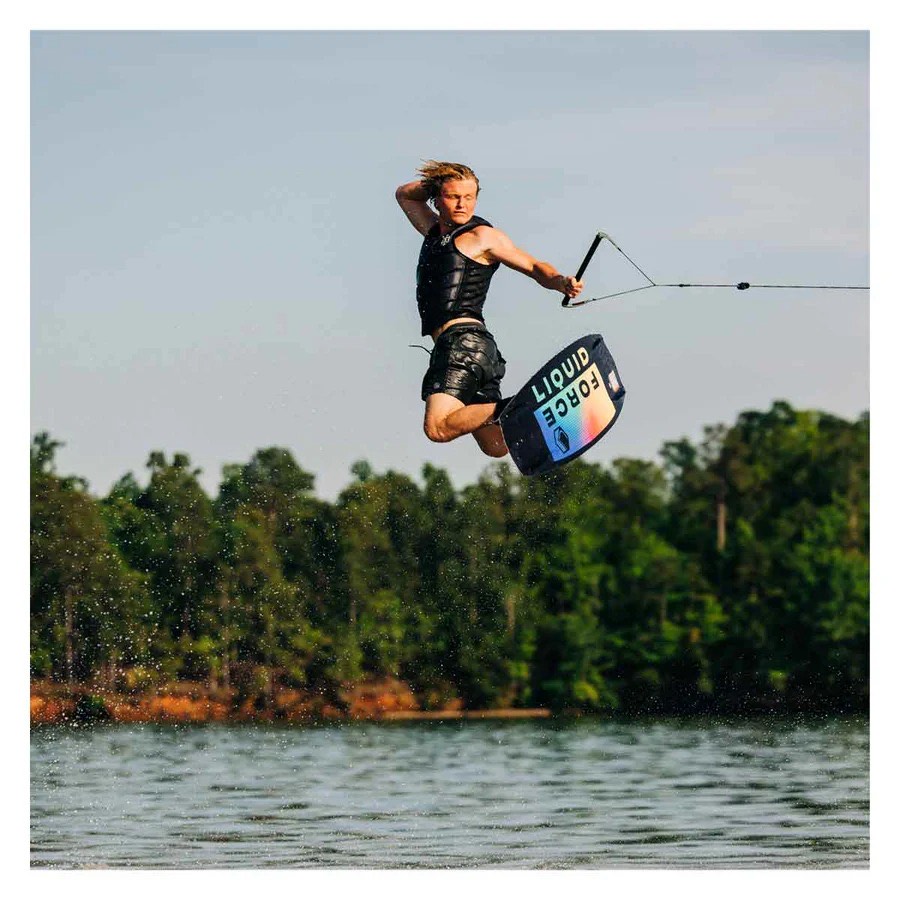From Basics to Tricks: Elevate Your Wakeboarding Skills
Wakeboarding is an electrifying sport that offers a thrilling combination of speed, water, and the chance to perform gravity-defying tricks. Whether you’re a beginner just learning to stand up on the board or an intermediate rider looking to add some flair to your repertoire, wakeboarding is packed with opportunities for skill progression. In this article, we’ll take you from the basics of wakeboarding to more advanced tricks, helping you elevate your skills on the water and boost your confidence.
1. Starting with the Basics
Before you dive into jumps and spins, it’s crucial to master the fundamentals. The basics form the foundation of every advanced wakeboard move, so it’s essential to start strong.
The Right Equipment
Your wakeboarding experience begins with choosing the right equipment. Each piece of gear plays an important role in helping you ride smoothly and safely.
- Wakeboard: For beginners, a continuous rocker board is recommended. It provides a smoother ride and is easier to control than boards with a three-stage rocker, which are designed for more advanced tricks. Select a board that fits your weight and riding style.
- Bindings: Comfortable and snug bindings are essential. Make sure they fit your feet properly and provide ample support, as this will help you maintain control while riding.
- Tow Rope: A wakeboarding-specific rope that doesn’t stretch is crucial for better control. Beginners typically start with a shorter rope (around 65 feet), as it makes it easier to ride closer to the boat and stay within the “sweet spot” of the wake.
- Life Jacket and Helmet: Safety should always come first. A Coast Guard-approved life jacket is essential, and wearing a helmet is recommended, especially for beginners.
Body Position and Stance
A solid body position is key to wakeboarding success. Whether you’re riding straight or preparing for a trick, your stance will affect your balance, control, and ability to handle the wake.
- Knees slightly bent: Keep your knees soft to absorb the motion of the water and maintain stability.
- Back straight: Avoid hunching over; keeping your back straight ensures better balance.
- Arms relaxed: Hold the tow rope handle low and near your waist, with your arms relaxed. Pulling too hard or tensing up will throw off your balance.
- Eyes forward: Always look ahead in the direction you’re riding. This helps you anticipate the wake and maintain your balance. Looking down at the board can cause you to lose control.
Getting Up on the Board
For beginners, one of the first challenges is getting up on the board. The key here is to let the boat do the work rather than trying to muscle yourself into a standing position.
- Start floating in the water with your knees bent and the board in front of you. Keep the rope handle close to your chest.
- As the boat accelerates, allow it to pull you up slowly. Keep your knees bent and your arms straight.
- Resist the urge to stand up too quickly. Stay in a crouched position until you’re fully on the surface of the water.
- Once you’re on top of the water, slowly rise into a standing position, keeping your knees bent and your weight centered over the board.
Mastering the start may take a few tries, but with practice, it will become second nature.
2. Improving Your Riding
Once you’re comfortable riding and balancing on the board, it’s time to work on building control and technique.
Edging
Edging is the technique of using the sides of your wakeboard to carve through the water. It’s a crucial skill for controlling your speed and direction, and it’s also the foundation for learning tricks like jumps.
There are two types of edges:
- Heel-side edge: Lean back on your heels to tilt the board’s back edge into the water. This is the easier of the two edges and is commonly used for building speed.
- Toe-side edge: Lean forward on your toes to tilt the front edge of the board into the water. Though more challenging for beginners, mastering the toe-side edge is important for performing more advanced tricks and turns.
To practice edging:
- Start with wide, gentle turns: Begin by carving large, smooth arcs across the wake by shifting your weight onto your heels or toes.
- Build speed gradually: As you become more comfortable, practice edging harder and faster. The harder you edge, the more tension you’ll create in the tow rope, which will be important for jumps.
Crossing the Wake
Once you’re comfortable with edging, the next step is learning how to cross the wake smoothly. This is essential for preparing jumps and tricks.
- Start by riding outside the wake, using your heel-side or toe-side edge.
- As you approach the wake, stay relaxed and keep your knees bent. Avoid stiffening your body, as this can make crossing the wake more difficult.
- When crossing the wake, focus on maintaining balance and control. With practice, you’ll be able to cross the wake smoothly and with confidence.
3. Taking It Up a Notch: Jumps and Air
Getting airborne is one of the most exciting aspects of wakeboarding. If you’re looking to elevate your skills, learning to jump is the first major milestone in the journey toward advanced tricks.
Wake Jumps
The key to a successful wake jump lies in the approach. Here’s how to nail your first wake jump:
- Edge out wide: Start on the outside of the wake, edging away from the boat.
- As you approach the wake, build speed gradually by edging harder.
- Stay low and relaxed as you hit the wake. Bend your knees to absorb the lift from the wake.
- At the peak of the wake, push off with your legs to get airborne. Keep your arms relaxed and your eyes forward.
- Land softly by bending your knees and absorbing the impact of the landing.
With practice, you’ll be able to clear the wake consistently and start working on higher jumps.
4. Adding Style: Grabs and Spins
Once you’re comfortable with wake jumps, you can start adding style to your jumps with grabs and spins.
Grabs
Grabs are a simple way to add flair to your jumps and help you improve your air awareness. Here are a few popular grabs to start with:
- Indy Grab: Reach down with your back hand and grab the toe edge of your board between your feet.
- Tail Grab: Use your back hand to grab the tail of your board (the back end).
- Mute Grab: Use your front hand to grab the toe edge of the board between your feet.
To perform a grab, wait until you’re fully in the air, then reach down to grab the board. Make sure to keep your knees bent and your weight balanced as you execute the grab.
Spins
Spins are a more advanced trick that involves rotating your body while in the air. Spins range from 180s to 360s and beyond.
- 180 Spin: A 180 involves turning your body 180 degrees in the air, switching your stance from regular to switch or vice versa.
- 360 Spin: A 360 involves a full rotation in the air. This trick requires excellent air awareness and a solid handle pass (transferring the rope handle from one hand to the other).
To practice spins:
- Start with a strong wake jump: Approach the wake with plenty of speed and pop off the wake.
- As you get airborne, initiate the spin by rotating your shoulders and hips in the direction of the spin.
- Spot your landing as you complete the rotation and land with your knees bent.
5. Mastering Advanced Tricks
For those who are ready to take their wakeboarding skills to the next level, there are plenty of advanced tricks to explore, including inverts and flips.
Backroll
The backroll is one of the most iconic wakeboarding tricks. It involves a backward somersault in the air.
- Approach the wake with a strong edge, building speed as you get closer.
- As you hit the wake, lean back and throw your head and shoulders back to initiate the rotation.
- Tuck your knees in as you rotate to maintain control in the air.
- Spot your landing and keep your knees bent to absorb the impact.
Tantrum
The tantrum is similar to a backflip and is a great trick for those looking to add some aerial excitement to their riding.
- Edge out wide and approach the wake with a hard heel-side edge.
- As you hit the wake, throw your shoulders back and let go with your back hand.
- The momentum will carry you into a flip. Keep your eyes on the horizon to stay oriented.
- Land softly by bending your knees to absorb the impact.
6. Staying Safe on the Water
As you progress in wakeboarding, it’s important to prioritize safety. While trying new tricks and pushing your limits can be exciting, accidents can happen if you’re not careful.
- Always wear a life jacket and consider wearing a helmet.
- Communicate clearly with the boat driver, especially when attempting new tricks.
- Warm up before riding to prevent injuries.
- Take breaks when needed to avoid fatigue, which can lead to mistakes and injuries.
Conclusion
Wakeboarding is a thrilling sport with endless opportunities for progression. Whether you’re just getting started or you’re eager to learn new tricks, the key to success is practice, patience, and persistence. By mastering the basics, building control and technique, and gradually working your way up to more advanced tricks, you can elevate your wakeboarding skills and enjoy the rush of flying across the water. Keep challenging yourself, stay safe, and most importantly, have fun!






